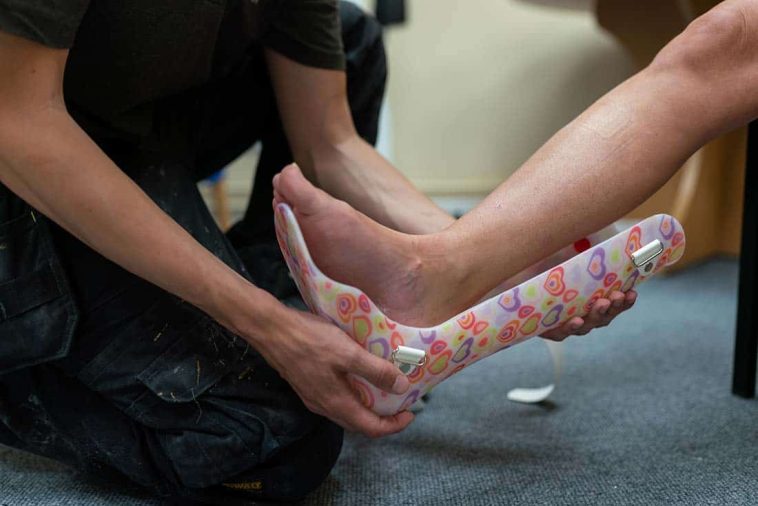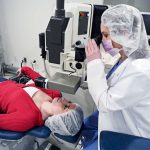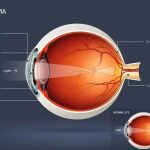Orthotic devices and prosthetic limbs assist in mobility and pain alleviation in a big way. People who have suffered injuries or accidents, or people with conditions and illnesses that limit mobility, range of movement, or doing everyday tasks comfortably should look into these to improve their quality of life.
But the world of orthotics and prosthetics is as vast as the number of reasons that might need you to go for one. That’s why we have written this guide so you can better understand what to expect and correctly identify what kind of aid you need.
We’ll be talking about custom orthotics and prosthetics as the majority of these devices are custom-made or custom-fitted for comfort and convenience.
Top 6 Custom Orthotic Devices
We’ve selected the best types of custom orthotic devices that are also the most well-known and common. These can provide a variety of benefits ranging from support and alignment correction to protection and functional improvements.
- Ankle-Foot Orthosis (AFO): An ankle foot orthotic device supports the ankle and foot, providing stability, alignment, and improved mobility for individuals with conditions such as foot drop, ankle weakness, or gait abnormalities.
- Knee Orthosis (KO): Provides stability and alignment to the knee joint. A KO is a brace designed to support and stabilize the knee joint, providing enhanced stability and alignment for individuals with knee injuries, instability, or post-surgical rehabilitation needs.
- Wrist Brace: wrist brace is a device that immobilizes and supports the wrist, providing relief for conditions such as sprains, strains, carpal tunnel syndrome, or post-surgical recovery.
- Spinal Orthosis (Back Brace): Helps with spinal alignment and provides support for the back. A spinal orthosis, commonly known as a back brace, is a device that provides alignment to the spine, offering stability and reducing pain for individuals with spinal conditions, injuries, or post-surgical rehabilitation needs.
- Foot Orthotics (Insoles): Customized inserts for shoes to improve foot function and alignment. Foot orthotics, also known as insoles, are custom-made or pre-fabricated devices. These are inserted into the shoes to provide support, correct biomechanical imbalances, and alleviate foot pain or discomfort caused by conditions such as plantar fasciitis, flat feet, or high arches. There are many different types of orthotic insoles. Consulting with a healthcare provider who specializes in them will help you get the most suitable option for you.
- Knee-Ankle-Foot Orthosis (KAFO): Provides support and control for the knee, ankle, and foot. A KAFO is a full-leg brace that provides correctional stability, aiding individuals with significant weakness or paralysis of the lower limbs to stand and walk with assistance.
With that out of the way, don’t decide on what you need without help! Any leading provider of orthotics Albuquerque will tell you that you require a professional assessment before the right device for you can be determined.
Top 7 Custom Prosthetic Limbs
Artificial limbs that replace missing body parts—Prosthetic limbs are typically synthetic arms and legs customized to meet specific needs and functional requirements. They can restore mobility, independence, balance, stability, psychological well-being, and so on.
Here are the most common prosthetics and how they work:
- Below-Knee Prosthesis: Replaces a lower leg amputation, providing mobility and support. A below-knee prosthesis is an artificial limb designed to replace the lower leg below the knee, allowing individuals with lower leg amputations to walk and engage in daily activities.
- Above-Knee Prosthesis: Replaces an amputated leg above the knee, allowing walking and functionality. An above-knee prosthesis is an artificial limb designed to replace the entire leg above the knee, enabling individuals with above-knee amputations to regain mobility and perform daily activities.
- Arm Prosthesis: Restores functionality and mobility to individuals with upper limb amputations. An arm prosthesis is an artificial limb designed to replace part or all of the arm, allowing individuals with upper limb amputations to regain functional abilities for tasks such as grasping, lifting, and reaching.
- Prosthetic Hand: Mimics the appearance and functionality of a natural hand. A prosthetic hand is an artificial hand that replicates the appearance and function of a natural hand, providing individuals with hand amputations the ability to grasp objects, perform intricate tasks, and restore hand functionality.
- Prosthetic Foot: Replaces a missing foot and helps with balance and walking. A prosthetic foot is an artificial foot designed to replicate the function and appearance of a natural foot, providing individuals with foot amputations the ability to walk, run, and maintain balance.
- Transradial Prosthesis: Designed for below-elbow amputations, enabling various hand movements. A transradial prosthesis is an artificial limb that replaces part or all of the forearm and hand, enabling individuals with below-elbow amputations to perform a wide range of activities requiring forearm and hand function.
- Transhumeral Prosthesis: Replaces an upper arm amputation, restoring arm movement. A transhumeral prosthesis is an artificial limb that replaces part or all of the upper arm and hand, allowing individuals with above-elbow amputations to regain functional abilities for various daily tasks.
In Conclusion
Whether you’re looking for knee braces Albuquerque or a replacement for a lost limb, these assistive devices can significantly improve the way you live and how you handle everyday tasks. It’s remarkable how orthotics and prosthetics have grown to become so technologically advanced and feature-equipped—And there’s a right device or limb for everyone today!
Hopefully, our best orthotics and prosthetics guide helped you narrow down your options.




